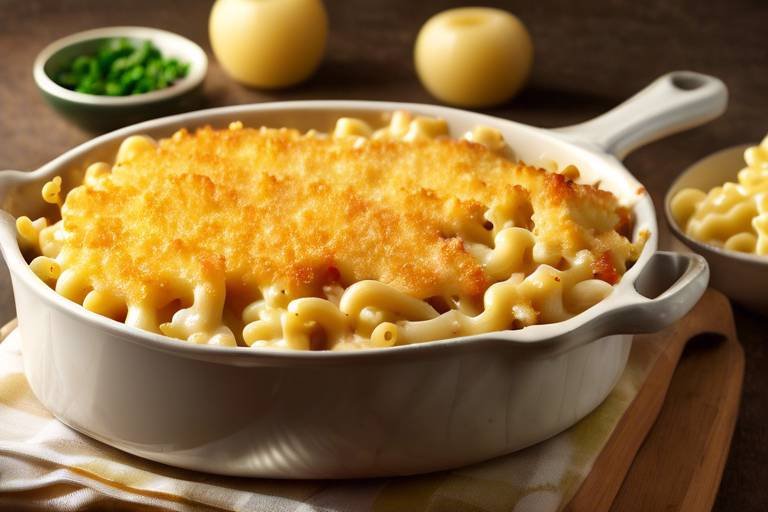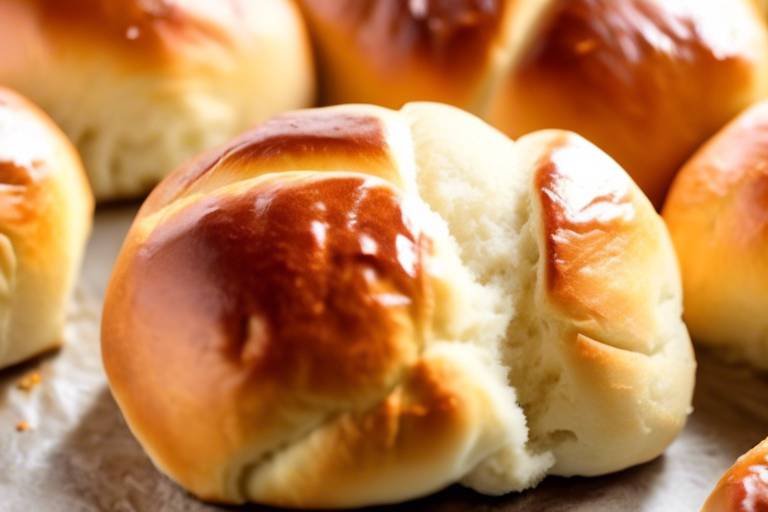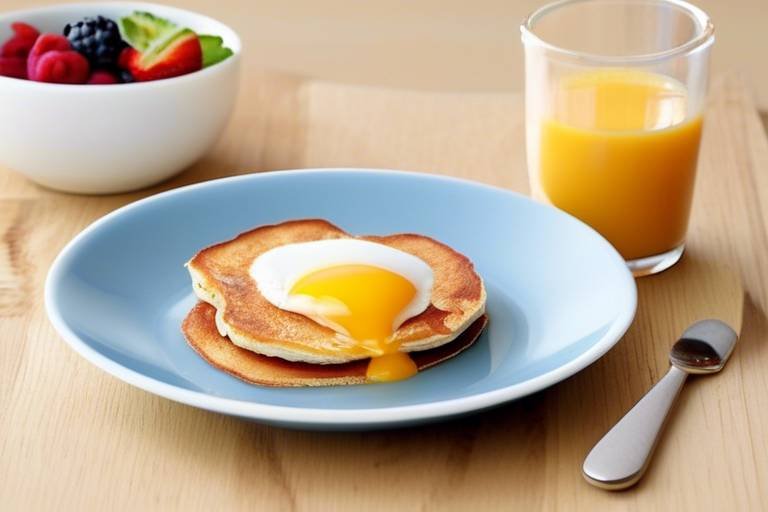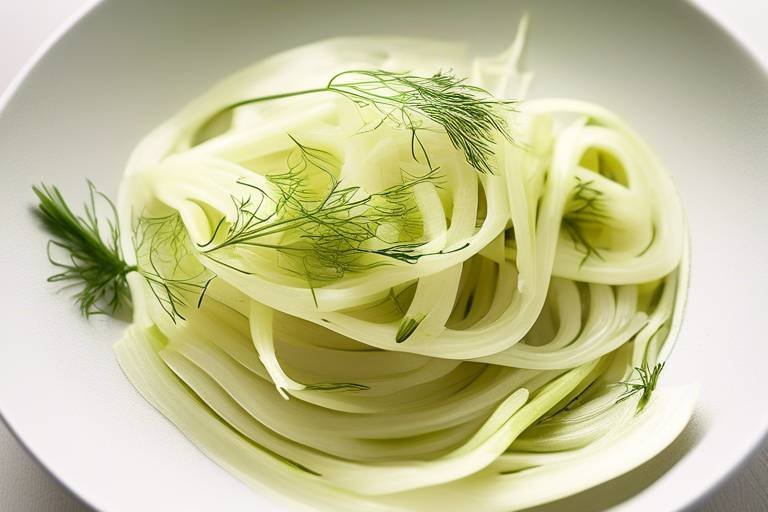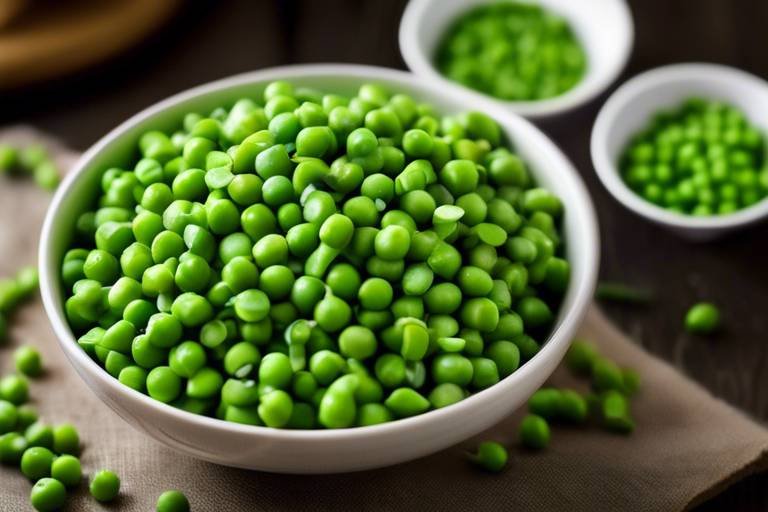Best Tips for Cooking with Honey
When it comes to cooking with honey, the possibilities are endless. From sweetening your morning tea to creating mouthwatering marinades, honey adds a unique flavor and natural sweetness to a wide range of dishes. But to truly master the art of cooking with honey, there are a few tips and tricks you should keep in mind.
First and foremost, choosing the right type of honey is essential. Different varieties, such as clover, wildflower, or buckwheat honey, offer distinct flavor profiles that can significantly impact the taste of your dish. Experimenting with various types of honey can help you discover new dimensions of flavor and find the perfect match for your recipes.
When substituting honey for sugar in recipes, keep in mind that honey is sweeter and more liquid than sugar. To achieve the desired sweetness level, you may need to adjust the amount of honey and reduce the liquid content in your dish. Additionally, honey's natural properties, such as antioxidants and antibacterial qualities, can bring added health benefits to your meals.
Baking with honey requires a bit of experimentation. Since honey is a liquid sweetener, you may need to modify the liquid ratios in your recipes and lower the oven temperature to prevent over-browning. Incorporating honey into your baked goods can result in a moist and flavorful end product that will have your taste buds dancing with delight.
For those looking to explore the savory side of honey, incorporating it into marinades, glazes, dressings, and sauces can add a rich depth of flavor to your dishes. The natural sweetness of honey pairs beautifully with savory ingredients, creating a harmonious balance that will elevate your culinary creations to a whole new level.
Pairing honey with cheese, fruits, nuts, and spices can unlock a world of flavor combinations that will tantalize your taste buds. Whether drizzling honey over a creamy brie or adding a touch of sweetness to a spicy dish, experimenting with honey pairings can lead to surprising and delightful culinary discoveries.
When it comes to storing honey, proper care is essential to maintain its quality and prevent crystallization. Store honey in a cool, dark place and ensure it is tightly sealed to prevent exposure to air and moisture. By following these simple storage tips, you can enjoy the natural goodness of honey for months to come.
Looking to get creative with honey? Try your hand at DIY projects like making honey butter, infusing oils with honey, or creating homemade beauty products using this golden ingredient. The possibilities are endless, and the results are sure to impress both your taste buds and your creativity.
Q: Can I substitute honey for sugar in any recipe?
A: While honey can be a great substitute for sugar in many recipes, keep in mind that it is sweeter and more liquid, so adjustments may be needed in terms of sweetness level and liquid content.
Q: How should I store honey to prevent crystallization?
A: To prevent crystallization, store honey in a cool, dark place and ensure it is tightly sealed to avoid exposure to air and moisture.
Q: Are there any health benefits to cooking with honey?
A: Yes, honey contains antioxidants and antibacterial properties that can offer health benefits when used in cooking, providing a natural sweetener with added nutritional value.

Choosing the Right Honey
When it comes to choosing the right honey for your culinary creations, it's essential to understand the diverse range of options available and how each type can impact the flavor profile of your dishes. Honey varieties can vary significantly based on the flowers from which bees collect nectar, resulting in a spectrum of flavors ranging from delicate and floral to bold and earthy.
For a mild and versatile honey that can complement a wide range of recipes, consider opting for clover honey. Its subtle sweetness makes it a popular choice for baking, cooking, and sweetening beverages. On the other hand, if you're looking to add a rich and robust flavor to your dishes, buckwheat honey is an excellent option. Its deep, molasses-like taste pairs well with hearty dishes and strong cheeses.
When selecting honey for your recipes, consider the intensity of flavor you desire and how it will interact with other ingredients. Lighter honeys, such as acacia or orange blossom, are ideal for delicate desserts and dressings, while darker varieties like wildflower or chestnut can add complexity to marinades and glazes.
To enhance the depth of your dishes, experiment with different honey varieties and observe how their distinct flavors elevate the overall taste experience. Whether drizzling honey over a cheese platter or incorporating it into a savory sauce, the right honey can truly transform a dish into something extraordinary.

Substitute for Sugar
Discover the versatility of honey in cooking with these tips and tricks to enhance flavors, sweeten dishes naturally, and explore new recipes that incorporate this golden ingredient.
When it comes to substituting sugar with honey in your recipes, it's not just about adding sweetness but also about infusing a unique flavor profile and reaping the health benefits it offers. Honey's natural sweetness can enhance the taste of your dishes while providing antioxidants and antibacterial properties. By replacing refined sugar with honey, you can create healthier and more flavorful meals without compromising on taste.
One key aspect to consider when using honey as a sugar substitute is its liquid form. Since honey is a liquid sweetener, you may need to adjust the liquid content in your recipe to maintain the right consistency. Additionally, honey is sweeter than sugar, so you can use less of it to achieve the desired level of sweetness.
When baking with honey as a sugar alternative, keep in mind that it caramelizes faster than sugar. This means you may need to lower the baking temperature slightly and reduce the baking time to prevent your baked goods from burning or becoming too dark. Experimenting with different types of honey can also add depth and complexity to your baked treats, creating a unique flavor profile.
Furthermore, honey's natural moisture-retaining properties can result in a softer texture in your baked goods compared to using sugar. To counteract this, you can adjust the amount of liquid in the recipe or combine honey with dry ingredients to maintain the desired consistency.
Whether you are sweetening beverages, sauces, or baked goods, honey can be a versatile substitute for sugar that not only enhances the taste but also brings additional health benefits to your dishes.

Baking with Honey
Baking with honey opens up a world of possibilities for adding natural sweetness and unique flavor profiles to your favorite baked goods. When incorporating honey into your baking recipes, it's essential to consider the liquid content of the honey and adjust other ingredients accordingly to achieve the desired texture and taste. Since honey is sweeter than sugar, you may need to reduce the overall amount of sweetener used in the recipe to avoid overpowering the other flavors.
One key tip for baking with honey is to lower the oven temperature slightly to prevent your baked goods from browning too quickly due to the natural sugars in honey. Additionally, you can experiment with different types of honey to explore how their distinct flavors complement various baked treats. For example, using a floral honey in a delicate cake or a robust honey in a hearty bread can enhance the overall taste and aroma of the final product.
When substituting honey for sugar in baking, keep in mind that honey is a liquid sweetener, so you may need to reduce the amount of other liquids in the recipe to maintain the proper consistency. Honey also adds moisture to baked goods, resulting in a softer texture and increased shelf life. To prevent your baked goods from becoming too dense, consider incorporating baking soda or baking powder to help them rise properly.
Experimenting with honey in baking allows you to create a wide range of delectable treats, from honey-infused cookies and muffins to honey-glazed pastries and bread. The natural caramelization of honey when baked adds a rich depth of flavor and a beautiful golden hue to your creations, making them not only delicious but visually appealing as well.

Savory Honey Recipes
When it comes to incorporating honey into savory dishes, the possibilities are endless. The natural sweetness and depth of flavor that honey adds can truly elevate the taste profile of various recipes. One popular savory honey recipe is honey-glazed chicken. The combination of honey, soy sauce, garlic, and ginger creates a sticky and flavorful glaze that coats the chicken perfectly, resulting in a dish that is both sweet and savory.
Another delightful way to use honey in savory cooking is by making honey-roasted vegetables. Drizzling vegetables like carrots, sweet potatoes, and Brussels sprouts with a mixture of honey, olive oil, and herbs before roasting them in the oven can caramelize the vegetables and enhance their natural sweetness. The touch of honey adds a delicious complexity to the dish.
For those who enjoy seafood, a honey-soy glazed salmon recipe is a must-try. The combination of honey, soy sauce, and a hint of citrus creates a sticky and flavorful glaze that perfectly complements the rich flavor of the salmon. This dish is not only easy to prepare but also a crowd-pleaser due to its unique blend of sweet and savory flavors.
When it comes to incorporating honey into savory recipes, the key is to balance the sweetness of the honey with other complementary flavors like herbs, spices, and acids. Experimenting with different combinations and ratios can help you discover new and exciting ways to use honey in your cooking, adding a touch of sophistication and depth to your dishes.

Honey Pairings
When it comes to enhancing the flavors of your culinary creations, pairing honey with the right foods can make a significant difference. Just like a perfect duet between two musicians, the harmony between honey and complementary ingredients can create a symphony of taste sensations on your palate. Imagine the sweetness of honey dancing with the saltiness of cheese or the nuttiness of almonds, creating a delightful melody that tantalizes your taste buds.
One classic pairing that never fails to impress is honey and cheese. The rich, creamy texture of cheese combined with the natural sweetness of honey forms a marriage made in gastronomic heaven. Whether you prefer a sharp cheddar with a drizzle of honey or a soft brie paired with honeycomb, the contrast of flavors is sure to leave you craving for more.
When it comes to fruits, honey complements a wide range of options, from tart berries to tropical delights. Drizzle honey over a bowl of mixed fruits for a simple yet elegant dessert, or use it to sweeten a fruit salad with a touch of natural goodness. The versatility of honey allows it to blend seamlessly with the natural sweetness of fruits, creating a harmonious balance of flavors.
For a crunchy and satisfying snack, consider pairing honey with nuts. Whether you sprinkle honey-roasted almonds over a salad or enjoy a spoonful of honey with walnuts, the combination of honey's sweetness with the earthy richness of nuts adds a delightful crunch to your culinary creations. It's a match made in snack heaven!
When it comes to spices, honey can elevate the flavors of both sweet and savory dishes. Experiment with cinnamon-infused honey drizzled over warm toast or try a spicy honey glaze on roasted vegetables for a delightful kick of flavor. The possibilities are endless when it comes to pairing honey with spices to create unique and unforgettable taste experiences.

Storing Honey
Discover the versatility of honey in cooking with these tips and tricks to enhance flavors, sweeten dishes naturally, and explore new recipes that incorporate this golden ingredient.
Understanding different types of honey and their flavor profiles can help you select the best variety for your recipes, whether you prefer a mild clover honey or a robust buckwheat honey.
Learn how to replace refined sugar with honey in various dishes to add sweetness while also benefiting from its unique flavor and health properties, such as antioxidants and antibacterial qualities.
Explore techniques for baking with honey, including adjusting liquid ratios, oven temperatures, and recipe modifications to achieve the perfect texture and sweetness in your cakes, cookies, and bread.
Discover savory dishes that incorporate honey as a key ingredient, adding depth and complexity to marinades, glazes, dressings, and sauces for meats, vegetables, and salads.
Unlock the art of pairing honey with various foods, such as cheese, fruits, nuts, and spices, to create harmonious flavor combinations that elevate your culinary creations to the next level.
When it comes to storing honey, proper practices are essential to maintain its quality and prevent crystallization. Store honey in a tightly sealed container to prevent exposure to air and moisture. Keep it at room temperature, away from direct sunlight, to preserve its natural properties. Avoid storing honey near heat sources as it can cause the honey to lose its flavor and texture. By following these storage guidelines, you can ensure that your honey stays fresh and delicious for longer periods.
Explore methods for preserving honey, such as infusing with herbs or spices, creating honey syrups, or making honey-based jams and spreads to enjoy its flavor year-round.
Get creative with honey by trying DIY projects like making honey butter, honey-infused oils, or honey-based beauty products for a fun and rewarding culinary experience.

Honey Preservation
When it comes to preserving honey, there are various methods to ensure its longevity and flavor retention. One popular technique is infusing honey with herbs or spices, which not only enhances the taste but also introduces new and exciting flavor profiles. By carefully selecting complementary ingredients, you can create unique blends that cater to your specific culinary preferences.
Another way to preserve honey is by transforming it into syrups that can be used in a variety of dishes, from drizzling over pancakes to sweetening cocktails. By heating honey with water and additional flavorings, you can create versatile syrups that add a touch of sweetness to both sweet and savory recipes, enhancing their overall taste.
If you're looking to enjoy the taste of honey throughout the year, consider making honey-based jams and spreads. By combining honey with fruits or even nuts, you can create delicious spreads that can be enjoyed on toast, paired with cheese, or used as a filling for pastries. These homemade preserves not only capture the essence of honey but also make for thoughtful gifts for friends and family.
Exploring the world of honey preservation opens up a realm of possibilities for incorporating this natural sweetener into your daily culinary creations. Whether you choose to infuse, syrupize, or jamify your honey, each method offers a unique way to savor the rich and complex flavors of this golden ingredient.

Honey DIY Projects
Are you ready to get creative in the kitchen and explore the wonderful world of honey DIY projects? Dive into a realm where honey transforms into more than just a sweetener but a versatile ingredient for a range of fun and rewarding culinary experiences. From indulgent honey butter to luxurious honey-infused oils, the possibilities are endless when you harness the power of this golden nectar.
One exciting honey DIY project to try is making your own honey butter. Combine creamy butter with the rich sweetness of honey for a spread that will elevate your morning toast or freshly baked scones. The blend of flavors creates a luxurious treat that is simple to make yet impressively delicious.
For those looking to add a touch of gourmet flair to their dishes, consider crafting honey-infused oils. Infuse olive oil with honey and herbs like rosemary or thyme to create a flavorful and aromatic oil perfect for drizzling over salads, roasted vegetables, or even dipping crusty bread into for a delightful appetizer.
If you have a sweet tooth and a passion for homemade treats, why not experiment with making honey-based beauty products? Create your own lip balm, facial masks, or body scrubs using honey as a natural moisturizer and antibacterial agent. Not only will you pamper yourself with luxurious products, but you'll also enjoy the benefits of honey's nourishing properties.
Frequently Asked Questions
- Can honey be used as a sugar substitute in all recipes?
Honey can be a great substitute for sugar in many recipes, but it's essential to consider its unique properties. Since honey is sweeter and more liquid than sugar, adjustments may be needed in terms of quantity and moisture content. It works best in recipes where its flavor profile complements the other ingredients.
- How should honey be stored to prevent crystallization?
Proper storage is key to prevent honey from crystallizing. Store honey in a tightly sealed container at room temperature, away from direct sunlight and moisture. If crystallization occurs, gently warm the honey in a water bath to dissolve the crystals without damaging its quality.
- What are the benefits of baking with honey?
Baking with honey not only adds sweetness but also brings moisture and a unique flavor profile to your baked goods. Honey's natural acidity helps in activating baking soda, leading to better texture and browning. Additionally, honey offers health benefits like antioxidants and antimicrobial properties.


